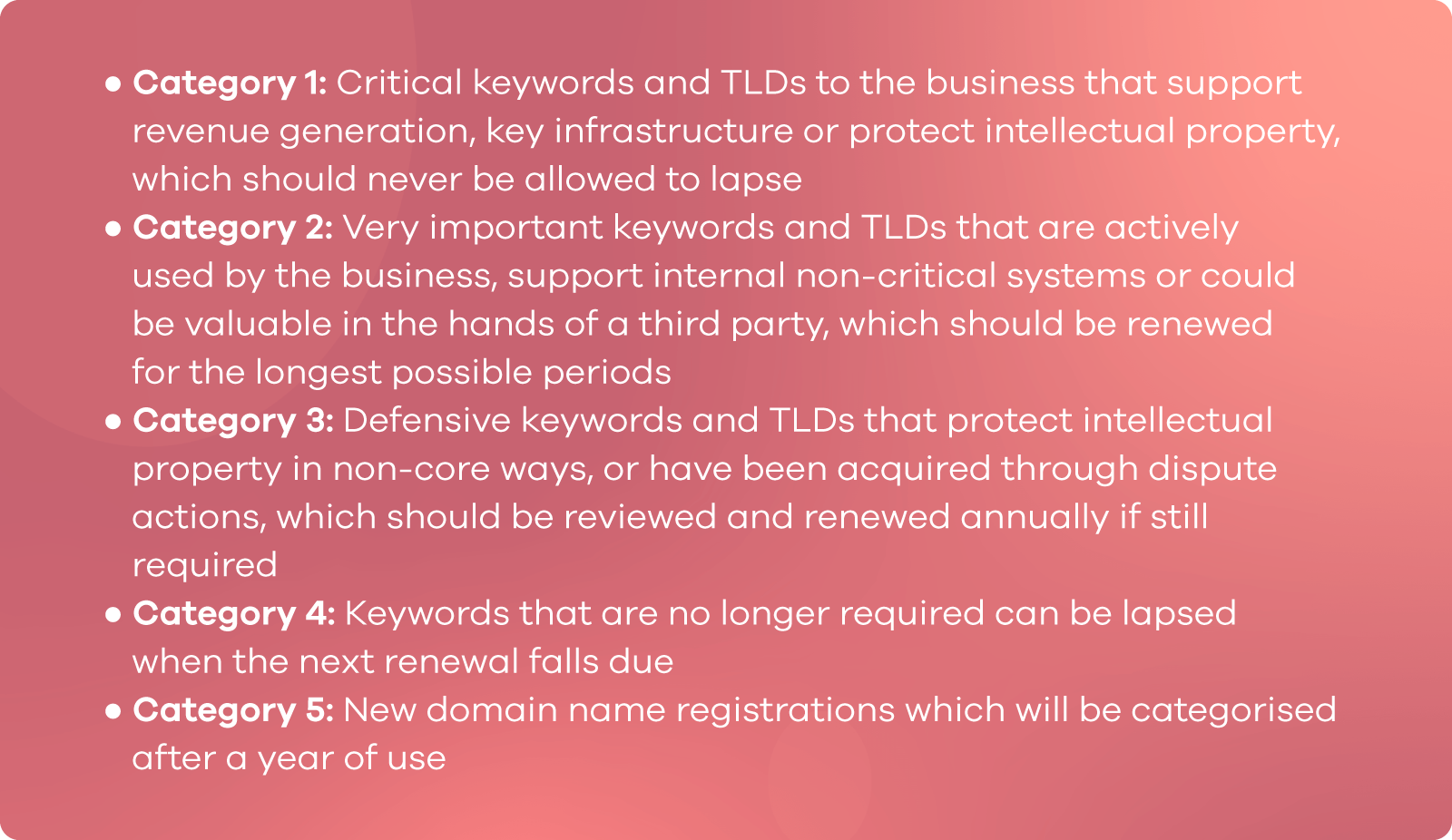Creating the right sized domain portfolio – Part 2 – Present and Protected
The first steps in creating a rightsized domain portfolio involve understanding what domain names are currently registered to the organisation and why they are in the portfolio, or not as the case often is. In case you missed it, we covered this in our previous blog post. Once all the names a business owns have been discovered and the internal owners identified, the next step in creating the right sized portfolio is understanding the potential risks today and in the future.
Domain-related risks can come in many forms. They could be related to compliance issues; they could be related to issues around intellectual property infringement, or they could be related to potentially harmful or malicious activity. Whilst it is essential to understand what those risks are today and the potential threat they pose to the business, it is just as important to have an eye on the vision and strategy of the organisation and how the domain name portfolio can be primed to take advantage of the opportunities that the future could bring and mitigate any risks.
As part of the first steps in creating the right sized domain portfolio, a business may have used a monitoring solution, such as Com Laude’s Watch service. The platform has been designed to provide clients with actionable intelligence on potentially infringing domain name registration. Com Laude Watch scans the domain name space daily, sampling over 280 million names, and prioritises the findings based on tailored algorithms presenting the results in a secure, intuitive collaborative case management system. This not only allows a business to understand the potential threats to their business through IP infringements but also to find those domain names that have escaped the eyes of the company’s domain management team.
The domain monitoring solution will provide a snapshot in time that will highlight those domain names that are causing damage to revenue and reputation but also those that pose a future risk, having been registered but not yet being actively used by a third party.
An organisation will now know what they have and what they don’t have in terms of domain names, but do they know what they need? The environment and landscape we work in are subject to rapid change, as the last eighteen months under the Covid-19 pandemic has taught us, and that means the domain names held within a portfolio may not represent the present or more importantly, the future, for the business. So the next step is to determine what the ideal portfolio should look like based on a set of agreed principles.
Each division and every stakeholder will have a view on what domain names the organisation should own. It is important to capture those views as a group as this will help guide the categorisation of the portfolio which is an essential part of creating both the domain name policy (the documented rules on what domains should be in a rightsized portfolio) and the domain name strategy (the actions required to get to the right sized portfolio and keeping it that way).
There are a number of ways to approach understanding what an organisation needs but one recommended way is to look at the keywords used in every domain name and classify them into four or five different categories, such as:

Domain name fads have come and gone over the years, whether that has been down to changes in the approach to search engine optimisation or the launch of new TLDs. Just over a decade ago hyphens were all the rage and then we had the launch of .Tel and .Mobi at a time when new TLDs were the annual high point of the domain name world. Since then the new gTLD programme has changed the domain landscape, leading to most organisations tearing up their policies and starting anew.
One approach to the categorisation is to create a matrix, listing the keywords to the business on the horizontal axis and the TLDs on the vertical. This enables a business to quickly visualise what their portfolio looks like today and where there are gaps. By then overlaying the results from the domain monitoring solution, such as Com Laude’s Watch, a picture starts to form on where there are gaps in the portfolio and what steps should be taken to grab the opportunities of white space and mitigate the risks of the conflicting third-party registrations.
In our next blog, we will explore the final stage in rightsizing the domain name portfolio, that of creating the strategic plan to get to domain name utopia, including registration tactics, using rights protection mechanisms and the acquisition of third-party domain names.
If you’d like to learn more about rightsizing your portfolio, speak to our domain strategists today.
